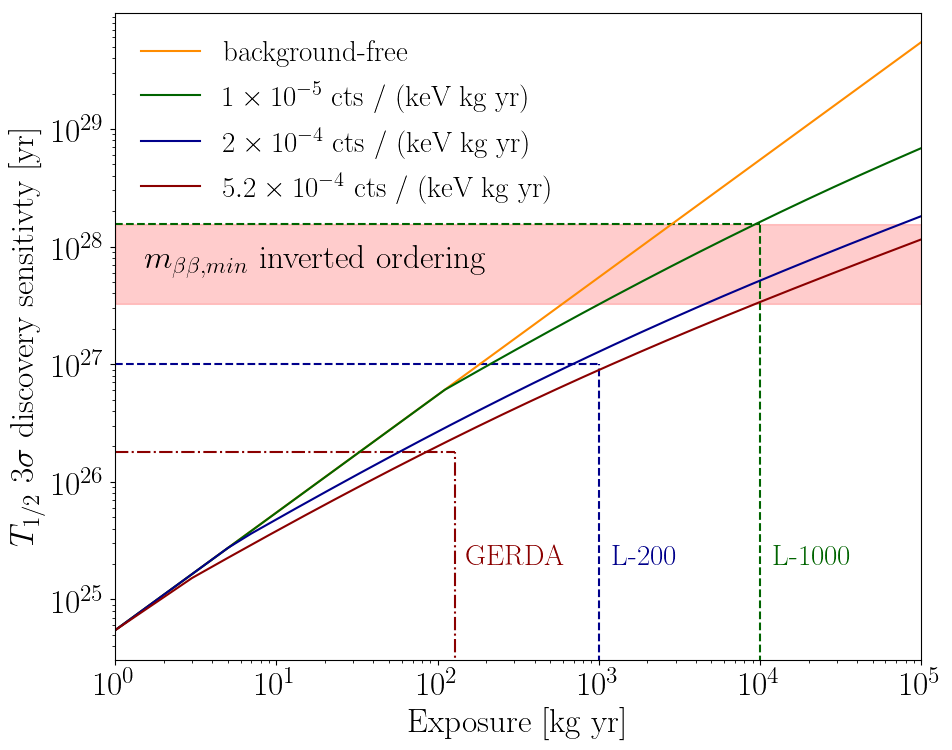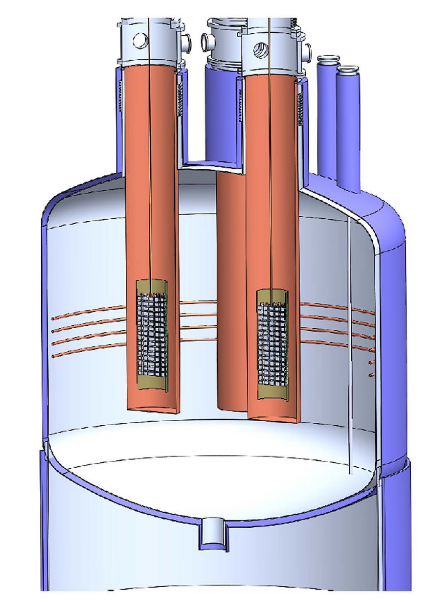LEGEND
The Large Enriched Germanium Experiment for Neutrinoless Double Beta Decay (LEGEND)

The LEGEND collaboration has formed by merging the two leading 76Ge-based neutrinoless double beta decay (0νββ) groups, MAJORANA DEMONSTRATOR and GERDA. The observation of 0νββ, a lepton number conservation violating process beyond the Standard Model of particle physics, would reveal the nature of neutrinos as either Dirac or Majorana particles, and give hints on both neutrino absolute mass scale and ordering. By conclusively demonstrating the Majorana nature of neutrinos, i.e., the equivalence of the neutrino and the antineutrino, a detection could also lead to a better understanding of the matter-antimatter asymmetry in the early Universe. The expected experimental signature in the energy spectrum of the emitted electrons would be a peak-like signal at the Q-value, which is 2039 keV for the ββ-decay in 76Ge (Qββ). One of the main challenges for a detection is the unavoidable continuous 2νββ background, ranging up to Qββ. Thus, a sufficient energy resolution is needed to separate the signal from these background events. With germanium detectors, an excellent resolution on the order of 0.1-0.2% at Qββ can be achieved, which makes them one of the most preferable isotopes to search for 0νββ. Currently, the best limit on the half-life of 0νββ in 76Ge is T1/2 > 1.8·1026 yr, determined by the GERDA collaboration. The LEGEND collaboration aims to further improve the sensitivity to 0νββ via a phased experimental program. The ultimate goal of LEGEND is to achieve a discovery potential to half-lives of T1/2 ≈ 1028 yr, and thus to probe neutrino masses of the inverted ordering region.
LEGEND-200

In the first phase of LEGEND, approximately 200 kg of enriched 76Ge detectors will be operated. LEGEND-200 is located at the Laboratori Nazionali del Gran Sasso (LNGS), and largely reuses the existing GERDA infrastructure, including some of the germanium detectors, the outer water tank, and the inner cryostat. The cryostat itself is filled with liquid argon (LAr), which cools the detectors to around 87 K, shields them from external backgrounds, and acts as an active scintillation medium. To detect scintillation light, the volume is instrumented with wavelength shifting fibers, silicon photomultipliers, and wavelength-shifting reflectors. These can be used to veto background events that deposit part of their energy in the LAr. The installation and commissioning of the LAr veto instrumentation, as well as 140 kg of detector strings, had been finished recently, see Fig. 1. The physics data taking began in early 2023. The full-scale operation of almost 200 kg of detector material will then be started in 2024, after another installation phase. After five years of operation, a discovery sensitivity of T1/2 ≥ 1027 yr can be expected, as indicated in Fig. 1.
LEGEND-1000

In the second stage, the final sensitivity goal shall be achieved by increasing the mass of the germanium detector array to at least 1000 kg, with a total run time of around one decade. Due to the long time scale needed for the production of the detector material, a novel baseline cryostat concept has been designed, as sketched in Fig. 3. It is planned to immerse the detectors into the cryostat in individual batches. In this way, data taking can continue with the detectors being already in operation when further batches will be installed. Discussions on the final location of the experiment in its subsequent stage are still ongoing, as in a different deep underground facility with a larger natural shielding, the background induced by cosmic muons could be reduced. In any case, LEGEND-1000, probing T1/2 ≥ 1028 yr, will be among the world leading experiments in the search for 0νββ decay in any isotope.
University of Zurich contributions: Calibration system

Our group has very actively contributed to the installation of LEGEND-200 and future planning of LEGEND-1000. In particular, we are responsible for the LEGEND-200 calibration system. For the calibration of the germanium detectors, an upgraded version of the existing GERDA source insertion system is operated to deploy multiple 228Th sources per system into the cryostat, see Fig. 4.
Following this multiple source approach, we can homogeneously calibrate the entire detector array, to achieve an optimal energy resolution and a stable energy scale for each individual detector, by deploying four systems simultaneously. Our work focused on the needed update and extension of the existing calibration system, as well as hardware tests under realistic experimental conditions, such as the required cryogenic temperatures. Furthermore, we contribute to the monitoring and control software of the system, to ensure both a flexible handling and a constant operability of the calibration system, which had been commissioned during summer 2022. We are also involved in the associated calibration source characterisation (see publication), and the LEGEND calibration data anaylsis.
Contributions: Wavelenth-shifting reflectors
.png)
Additionally, we are involved in the design, installation, and characterization of the wavelength shifting reflectors for the liquid argon veto system. For LEGEND-200, these reflectors were mounted inside the cryostat and in-situ coated with the wavelength shifter TPB (tetraphenyl butadiene). This wavelength shifter emits blue light when illuminated with UV light, as shown in Fig. 5. The samples from these reflectors were characterized using a liquid argon setup in our lab at UZH (see details in ourpaper). For LEGEND-1000, we are currently working on the R&D of ean asily scalable WLSR based on polyethylene naphthalate (PEN).